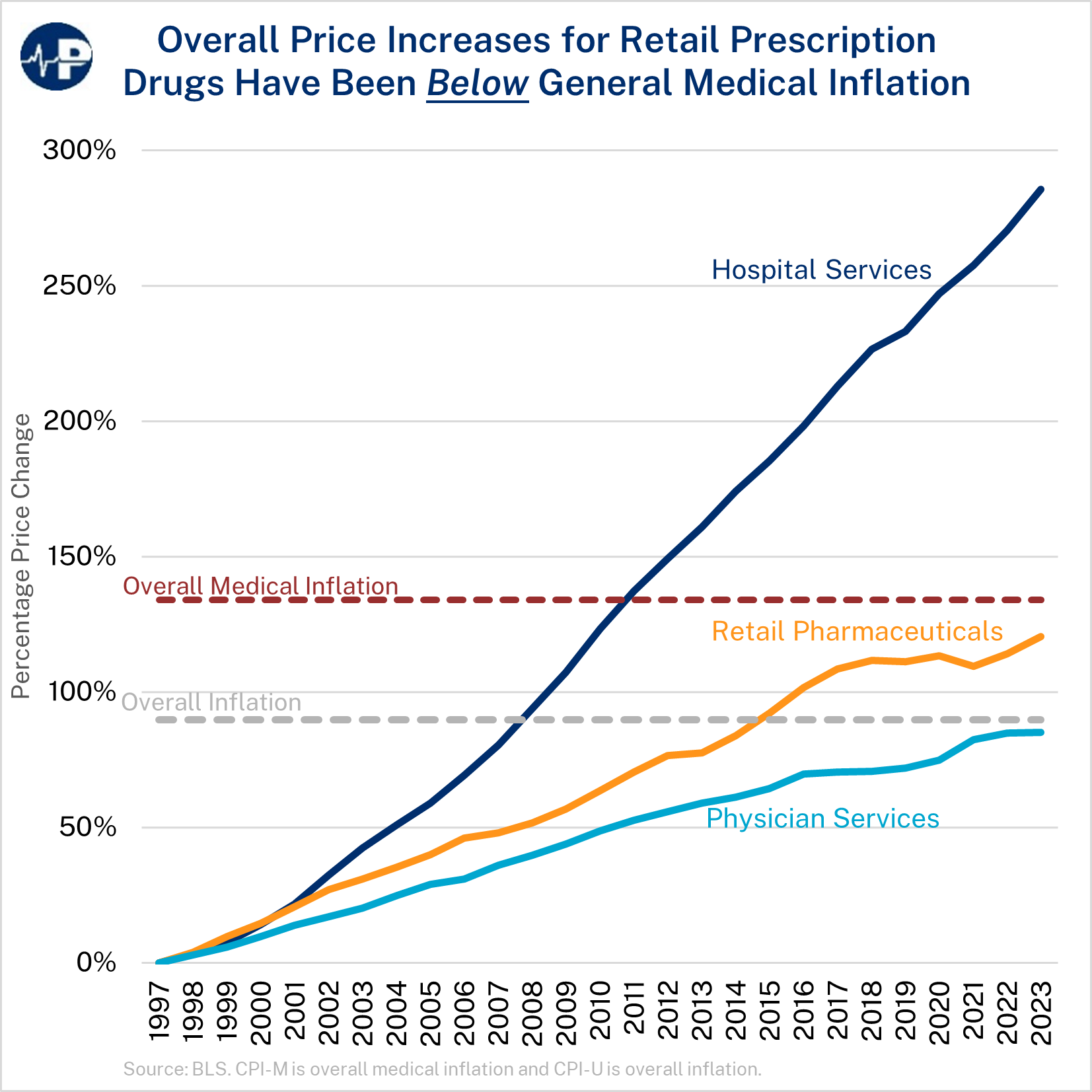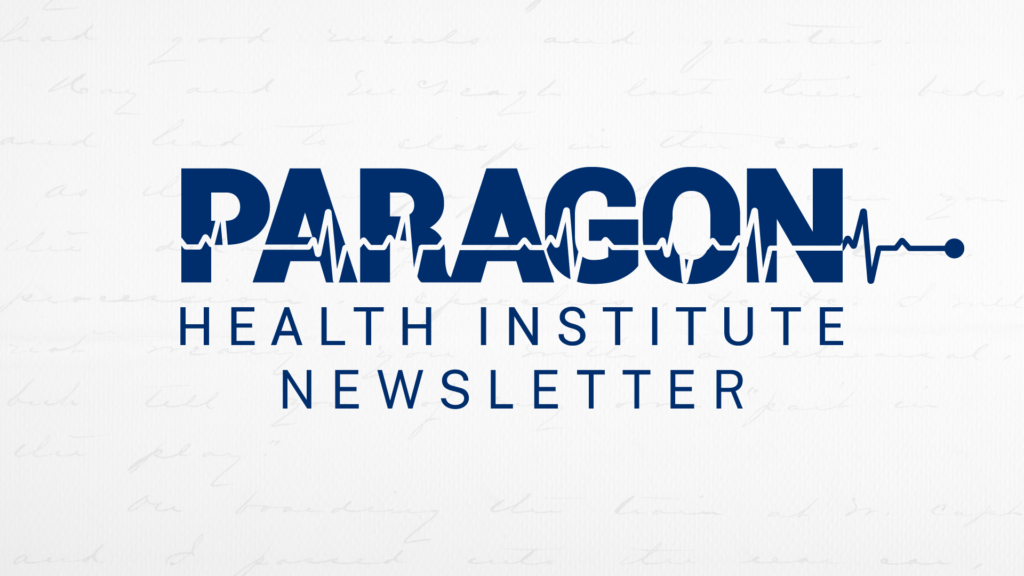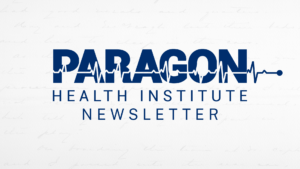This week, I highlight our new and improved website, Dr. Joel Zinberg on The Sean Hannity Show, and our recent event on Capitol Hill. But first: our new Paragon Pic, which is our brand name for our series of weekly figures.
Overall Price Increases for Retail Prescription Drugs Have Been Below General Medical Inflation
As Chairman Bernie Sanders and the Senate HELP Committee turn to another hearing on the price of prescription drugs tomorrow, it is worth noting that over the past 20 years prices of retail prescription drugs have increased at a slower rate than health care prices generally and much slower than hospital prices, as seen in the figure below.

This week’s Paragon Pic shows the increase in the prescription drug component of the Consumer Price Index (CPI-Rx) produced by the Bureau of Labor Statistics compared to hospital services, physician services, general medical inflation, and general inflation.
CPI-Rx only applies to retail pharmaceuticals — drugs that someone purchases at the pharmacy counter. While CPI-Rx captures most drugs and most drug spending (and encompasses all the drugs initially subject to negotiation under the Inflation Reduction Act), it excludes some of the highest-priced, often lower-volume drugs that are administered by a physician. CPI-Rx accounts for the substitution of generic drugs, so it accounts for cheaper alternatives becoming available and being used. Finally, CPI-Rx is a measure of what is actually paid at the pharmacy counter — including out-of-pocket spending — as opposed to the list price. A limitation of CPI-Rx is that it does not include discounts or rebates that are executed post-sale — so the measure may overestimate price increases as these types of discounts and rebates have grown over time.
CPI-Rx is a superior measure than what is typically cited by Chairman Sanders or reported in the press — the annual round of list price increases that occurs at the beginning of each year. List prices do not include negotiated discounts and are not as important as what the patient ultimately pays.
So why do prescription drug prices dominate the news and the press releases of politicians while hospital price increases get less attention? Prescription drug spending is much more routine for patients, especially seniors, than hospital visits. Furthermore, out-of-pocket spending on prescription drugs averages around 14 percent whereas it is 3 percent for hospital spending, so patients are far more conscious of how much they are spending on prescription drugs.
The relative sensitivity of patients to prescription drug prices in comparison to hospital prices and the fact that hospital prices have increased at a faster rate are related. Patients almost always choose the more affordable prescription drug option if it is available to them because they feel it in their pocketbooks. Patients are typically more insulated from hospital prices, and this dampens the incentive to shop for care and it contributes to not only higher prices but also higher insurance premiums.
This figure drew inspiration from the “Chart of the Century” by Mark Perry of American Enterprise Institute. In that chart, Perry demonstrates prices in areas of the economy subject to government regulatory capture have increased dramatically over the past 20 years while there have been real price declines, not to mention significant quality improvements, in areas with less government intervention.
Read more about CPI-Rx in this 2019 report from the White House Council of Economic Advisers.
New and Improved Website
Paragon has a new and improved website. The new site is a significant improvement over the previous one, with many new user-friendly features that advance health policy education.
A glossary of health care terms helps students and professionals to better understand core health programs. The terms include key concepts from Paragon’s Medicaid, Medicare, Private Health, and Public Health initiatives, and new terms will be added every month.
The research paper pages are also improved, with old papers being updated to the refreshed layout every week. You can see the new features in action on the paper Escaping from Medicare’s Flawed Physician Payment System. The update features a navigation which allows users to skip to different sections of each paper, like the introduction or conclusion. Additionally, each paper’s footnotes appear at the bottom of the page with dynamic links.
Finding our work has become easier, too. A widget on our research and analysis page allows users to sort the content by initiative, publication type, topic, location, or even the media outlet that originally published the piece. Features on each content page link to our author profiles, which in turn highlight the work of each team member, and an improved about page helps all visitors to learn about Paragon’s mission and contributors.
This is just a sampling of the updated features, so I encourage you to explore the new site at your leisure and let me know if you have further suggested improvements.
Joel Zinberg on Sean Hannity
Paragon’s Dr. Joel Zinberg appeared on The Sean Hannity Show on February 1st to discuss his recent National Review Editor’s Pick op-ed, “When Science is Not Science.” In the article, Joel lays the blame for vaccine hesitancy, among many other post-pandemic ills, on a brand of pandemic-era public-health science “that was evidence-free, politically and personally motivated, dismissive of other points of view, and that ended up undermining public trust.”
The public health agencies’ profound failures led to negative outcomes in the form of lost jobs and broken lives, with particular harm on children. “They shut down schools and destroyed kids’ education, [resulting] in years of learning loss in math and reading,” Joel told Hannity during the interview. “Those are effects that are suffered most by our most vulnerable populations.” Joel’s statements underscore a critical finding from Paragon’s paper Freedom Wins: States that implemented more severe interventions during the pandemic did not meaningfully improve health outcomes — and had much worse educational and economic outcomes — compared to states that imposed less restrictive measures.
Paragon’s 2024 Kickoff Hill Event
On January 24, Paragon kicked off our 2024 series of in-person Congressional Health Policy Education events. Each of Paragon’s directors gave an overview of the major health policy developments in 2023 and told staffers what they expected in the year ahead. We had a packed house for a lunchtime panel discussion I hosted between Wendell Primus and Ryan Long, the Health Policy Advisors for Speaker Nancy Pelosi and Speaker Kevin McCarthy, respectively. Wendell and Ryan provided insights on the policy process, key health policy issues, and how to be effective health care staffers.
Check out some photos from the event below.


All the best,
Brian Blase
President
Paragon Health Institute



